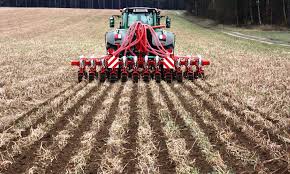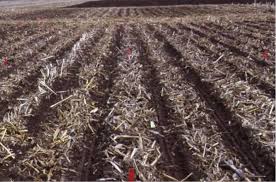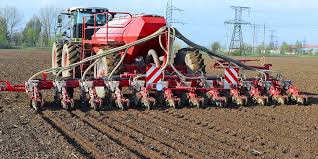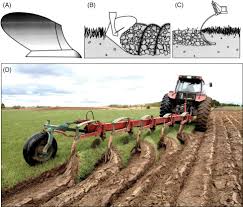In this article, tillage operations are explored, including their purposes, types, when and how deep they should be performed, and the implements required for these operations. The negative effects of frequent tillage on soil and the environment are discussed, emphasizing the importance of sustainable crop production practices.
Definition of Tillage
Tillage is the alteration of soil condition using a tool to benefit man. After clearing the land and removing plant debris, some form of tillage is often necessary before planting crops. Different forms of tillage may also be performed while crops are growing in the field.
Read Also: Life Cycle and Morphology of Pteridophytes
Purposes of Tillage

Tillage is performed for one or more of the following reasons:
1. Seed bed preparation: Tillage loosens the soil, creating a seedbed suitable for seed germination and seedling development. A good seedbed should be moist and free of large soil lumps that may hinder contact between seed and soil.
2. Control of weeds: Weeds growing on fallow land can be controlled by being ploughed under. Ploughing before cropping can also kill existing weeds.
3. Incorporation of organic matter into the soil: Organic matter and crop residues are mixed into the soil through tillage. This accelerates decomposition, releasing nutrients to plants.
4. Soil and water conservation: Tillage breaks up surface layers of soil, allowing water to infiltrate more rapidly. This increases water availability for crops and reduces soil erosion from runoff.
5. Improvement of the soil’s physical condition: Tillage can break up hardpan layers, allowing deeper root penetration and improving water percolation.
Historical Development of Tillage

Tillage practices date back to ancient times when primitive tools made of wood, bone, or stone were used to chop and dig the soil. These tools helped destroy native vegetation and reduce competition from weeds.
Over time, domestic animals were used to pull simple plows, and advancements like the iron and steel plows of the 19th century further improved tillage efficiency. Rotary implements like disk plows and harrows followed, increasing soil preparation options.
Types of Tillage
1. Ploughing: One of the oldest tillage methods, ploughing involves using a shear to slice through the soil, loosening and turning it over. Implements include moldboard and disc ploughs.
2. Harrowing: If large lumps remain after ploughing, harrowing breaks them up to create a finer seedbed.
3. Mounding: Common in tropical Africa, mounding collects soil into conical heaps. This method accommodates different crops requiring various soil conditions on the same field.
4. Ridging: Soil is gathered into elongated ridges, which is useful for controlling erosion and managing water flow.
5. Bed Making: Common in horticulture, beds are raised portions of land broader than ridges, often made using hand tools.
6. Inter-tillage: Tilling between crop rows to control weeds and promote water infiltration.
7. Grading and Terracing: These methods adjust field topography for irrigation or erosion control on sloping lands.
8. Minimum Tillage: This concept reduces soil disturbance to preserve soil structure and minimize erosion.
Read Also: Morphology, Life Cycle, and Classification of Bryophytes
Tillage Implements

1. Ploughing Implements: Ploughs help bury organic matter, loosen the soil, and eliminate weed competition. Moldboard and disc ploughs are common tools.
2. Seed Bed Preparation Implements: Harrows, field cultivators, and similar tools break up soil clods, level the field, and control weeds.
3. Inter-tillage Implements: Rotary hoes and spike-tooth harrows are used for inter-tillage, enhancing aeration and controlling weeds.
Tillage practices are essential for improving soil properties, conserving moisture, controlling weeds, and enhancing nutrient availability.
These practices also help reduce surface runoff, control erosion, and create favorable conditions for plant growth. Sustainable practices, such as minimum tillage, are vital for preserving soil structure and ensuring long-term productivity in agriculture.
Do you have any questions, suggestions, or contributions? If so, please feel free to use the comment box below to share your thoughts. We also encourage you to kindly share this information with others who might benefit from it. Since we can’t reach everyone at once, we truly appreciate your help in spreading the word. Thank you so much for your support and for sharing!

